Research at CabLab
Cognitive Mechanisms of Control: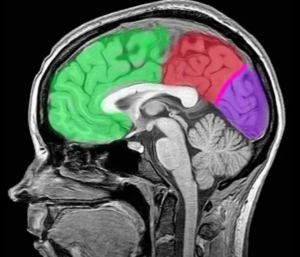
Our research aims to understand how our cognitive system helps us control our behavior to meet our goals. We focus on the processes that enable flexible and goal-directed behavior, specifically examining the relationship between working memory and cognitive control. Additionally, we explore how these capacities contribute to higher-order cognition.
Relavent Publications:
- Samper, J, Morrison, A, & Chein, JM. (2021). Doubts about the role of rehearsal in the irrelevant speech effect. Experimental Psychology.
- Morrison, A.M., Rosenbaum, G.R., Fair, D.A., & Chein, J.M. (2016). Variation in Strategy Use Across Measures of Verbal Working Memory. Memory & Cognition, 44, 922-936.
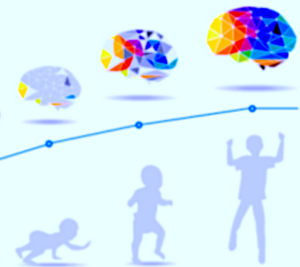 Development of Self Control:
Development of Self Control:
As individuals transition from pre-adolescence to adulthood, noteworthy transformations occur in the neural systems that underpin cognitive control. These alterations contribute to enhancements in the capacity for deliberate, goal-directed behavior. Our laboratory investigates the dynamics of decision-making by studying the asynchronous development of cognitive control and affective processing. We specifically concentrate on understanding the nuanced interplay between these systems to examine how the psychosocial context modulates their interaction.
Relavent Publications:
Rosenbaum, G., Venkatraman, V., Steinberg, L., Chein, J. (August, 2021). Do adolescents always take more risks than adults? A within-subjects developmental study of context effects on decision making and processing. PLOS One.
Smith, A., Rosenbaum, G., Botdorf, M., Steinberg, L., & Chein, J. (2018). Peers Influence Adolescent Reward Processing, But Not Response Inhibition. Cognitive Affective Behavioral Neuroscience, 18(2), 284-295. DOI 10.3758/s13415-018-0569-5
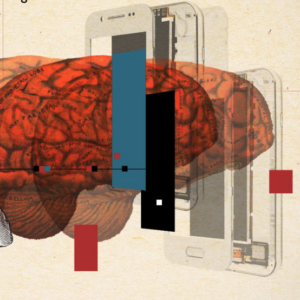
Digital Media and Adaptive Behavior:
In the context of an increasing prevalence of digital media technologies, including smartphones and social media, concerns have emerged regarding their potential impact on cognitive faculties and developmental processes. Our research encompasses a comprehensive examination of the intricate interplay among age, individual differences, and psychological and neurobiological functioning in the context of interactions with digital technology. Notably, our laboratory distinguishes itself by incorporating advanced measurements to systematically assess novel technology engagements.
Relavent Publications:
Wilmer, H.H., Hampton, W., Olino, T., Olson, I., & Chein, J.M. (2019) Wired to be connected? Links Between Mobile Technology Engagement, Intertemporal Preference, and Frontostriatal White Matter Connectivity. Social Cognitive Affective Neuroscience, 14(4), 367-379.
Wilmer, HH, Sherman, LE, & Chein, JM. (2017). Smartphones and Cognition: A review of research exploring the links between mobile technology habits and cognitive functioning. Frontiers in Psychology, 8, 605. DOI: 10.3389/fpsyg.2017.0060
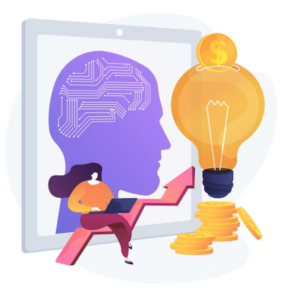 Working Memory and Adaptive Functioning
Working Memory and Adaptive Functioning
Our research investigates the potential enhancement of adaptive functioning through interventions aimed at augmenting working memory capacity and refining attentional control. While previous studies imply task-specific gains with practice, emerging evidence suggests that systematic training in working memory and attention control may yield broader, more generalizable improvements. Within our laboratory, we employ novel, theory-driven methodologies for training these fundamental cognitive faculties. Our investigations assess the efficacy and extent of generalization resulting from diverse training modalities, advancing scientific understanding of heightened adaptive functioning through targeted cognitive interventions.
Relavent Publications:
Rosenbaum, G., Botdorf, MA., Steinberg, L., & Chein, JM. (2017). Working Memory Training in Adolescents Decreases Laboratory Risk Taking in the Presence of Peers. Journal of Cognitive Enhancement, 1(4), 513-535.
Morrison, A.B. & Chein, J.M.(2011). Does working memory training work? The promise and challenges of enhancing cognition by training working memory. Psychonomic Bulletin & Review, 18(1), 46-60.

Project LITe: Long Term Impact of Technology
We are conducting a long-term study to explore how psychological and cognitive factors relate to smartphone and social media (SSM) use across different age groups. Our goal is to understand how these habits connect to decision-making, emotional development, and overall mental health. The study involves two main parts: first, we’re gathering initial insights during two in-person visits where participants will play psychology games, answer surveys, and undergo an MRI. Then, we’ll conduct follow-up assessments every 15 months to track changes over time.
We are currently recruiting participants and invite families to join our research. Your participation would contribute valuable insights.
Want to Participate? Sign up Here!
 Do socially sensitive individuals remember social interactions differently?
Do socially sensitive individuals remember social interactions differently?
Individuals vary in their sensitivity to social feedback, such as peer acceptance and/or rejection. Moreover, sensitivity to social feedback also changes over the course of development and is associated with psychiatric conditions like social anxiety and autism spectrum disorder. Remembering the peers one interacts with, in addition to the social feedback received from those peers, is therefore important, but remains an underexplored area of research. This project led by Ph.D. student Büşra Tanriverdi explores 1) how the brain responds differently to social acceptance and rejection, as well as social ambiguity, from peers, 2) how these neural signals of social feedback sensitivity change over the course of development, and 3) whether the neural markers of social sensitivity are related to how social information about the (accepting and/or rejecting) peers is later remembered. To study these questions, Büşra is using both behavioral and functional MRI (fMRI) experiments as well as self-report measurements such as Resistance to Peer Influence (RPI) and Rejection Sensitivity Questionnaire (RSQ).
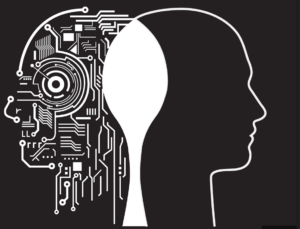 Project CHAI: Comparing Human and Artificial Intelligence
Project CHAI: Comparing Human and Artificial Intelligence
Emerging generative AI models like ChatGPT have raised concerns about whether people can differentiate human and non-human (i.e., AI) content. Ongoing work seeks to examine whether people can differentiate between human and AI-generated (i.e., ChatGPT) content and whether psychological qualities such as fluid intelligence, response competition, empathy, and digital media habits relate to the ability to differentiate between human and AI materials. This project is led by Ph.D. student Steven Martinez.
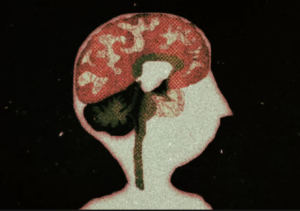 How does our brain process aversive, and potentially traumatic experiences, and transform them into long-term memories?
How does our brain process aversive, and potentially traumatic experiences, and transform them into long-term memories?
Negative life experiences tend to remain strong in our memories, with potential to have detrimental effects on our mental health. The series of studies led by Ph.D. student Büşra Tanriverdi explores 1) how human hippocampus and cortex continues to process aversive versus neutral experiences after encoding, 2) how these experiences are then transformed into long-term representations in the brain, and 3) whether the differential processing of aversive and neutral experiences in the brain could help us understand the individual differences in experiences of traumatic symptoms, such as flashbacks and intrusions. To study these questions, Büşra is using both behavioral and functional MRI (fMRI) experiments as well as self-report measurements such as PTSD Check List for DSM-5 (PCL-5), emotion regulation and intolerance of uncertainty.
 The relationship between memory communication styles, memory accuracy, and perceptions of veracity.
The relationship between memory communication styles, memory accuracy, and perceptions of veracity.
This project, led by Ph.D. student Steven Martinez, investigates the influence of memory accuracy on how memories are communicated. Research on subjective markers of memory has long established that confidence is often a poor marker of memory accuracy, but less is known about how linguistic patterns (i.e., word choice) relate to memory accuracy. Ongoing work uses natural language processing tools to characterize memory communication styles and determine whether these communication styles relate to memory accuracy. Relatedly, do memory communication styles influence perceptions of veracity, such as accuracy or honesty? We also explore how unique communication styles may be linked to perceptions of accuracy and honesty.
 Project AIDI: Intervention to enhance human discernment of artificial intelligence:
Project AIDI: Intervention to enhance human discernment of artificial intelligence:
The rapid advancement of publicly available artificial intelligence (AI) systems has ignited concerns about their potential misuse, as their ability to mirror the characteristics of human-generated information has resulted in many people misattributing AI-generated information as originating from humans. While existing literature explores whether human evaluators can accurately distinguish human- and AI-generated information, less attention has been directed toward potential interventions that may augment our ability to accurately determine the origin of information. This begs the question: Can learning and motivation improve the ability to detect AI-generated information? An extension of Project CHAI, our research investigates whether these behavioral interventions improve human evaluators’ ability to accurately distinguish human- and AI-generated materials.
2024 and in-press
- *Beard, E, Venkatraman, V, and Chein, J (in press), “Neurodevelopmental Theories of Adolescent Decision Making: Overview and Implications for Consumer Behavior. Journal of the Association for Consumer Research.
- Hutton, J.S., Piotrowski, J.T., Bagot, K., Blumberg, F., Canli, T., Chein, J., Christakis, D.A., Grafman, J., Griffin, J.A., Hummer, T., Kuss, D., Lerner, M.D., Marcovitch, S., Paulus, M.P., Perlman, G., Romeo, R., Thomason, M.E., Turel, O., Weinstein, A., West, G., Hurst-Della Pietra, P., Potenza, M.N. (in press). Digital Media and Developing Brains: Concerns and Opportunities. Current Addiction Reports
2023
- *Tanriverdi, B, Cowan, E, *Metoki, A, *Jobson, K, Murty, V, Chein, J, & Olson (Oct, 2023). Awake Hippocampal-Cortical Co-reactivation Is Associated with Forgetting, Journal of Cognitive Neuroscience.
- Zaff, O., Wyngaarden, J. B., Dennison, J. B., Sazhin, D., Chein, J., Alloy, L. B., … & Fareri, D. (Oct, 2023). Social Context and Reward Sensitivity Enhance Corticostriatal Function during Experiences of Shared Rewards. bioRxiv, 2023-10.
2022
- *Carroll, A, *Damme, KSF, Alloy, LB, *Bart, CP, *Ng, T, *Titone, M, Chein, J, Cichocki, A, Armstrong, CA, Nusslock, R (Nov, 2022). Risk for Bipolar Spectrum Disorders Associated with Positive Urgency and Orbitofrontal Cortical Grey Matter Volume. Neuroimage: Clinical, 36, 103225.
- *Haupt, M., *Weiss, S., *Chiu, M. Cuomo, R., Chein, J., McKay, T (Feb, 2022). Psychological and Situational Profiles of Social Distance Compliance during COVID-19. Journal of Communication in Healthcare, 15(1), 44-53. doi.org/10.1080/17538068.2022.2026055
- *Damme, K.S.F., Alloy, L., *Kelly, N., *Carroll, A., *Young, C.B., Chein, J., *Ng, T., *Titone, M.E., *Bart, C.E., & Nusslock, R., et al. (March, 2022) Bipolar Spectrum Disorders are Associated with Increased Gray Matter Volume in the Medial Orbitofrontal Cortex and Nucleus Accumbens. Special Issue: JCPP Advances. e12068.
2021
- *Bart, C. P., Nusslock, R., *Ng, T. H., *Titone, M. K., Carroll, A. L., *Damme, K. S., … & Alloy, L. B. (Nov, 2021). Decreased reward-related brain function prospectively predicts increased substance use. Journal of Abnormal Psychology, 130(8), 886.
- *Samper, J, Morrison, A, & Chein, JM. (Sept, 2021). Doubts about the role of rehearsal in the irrelevant speech effect. Experimental Psychology, 68(5):229-242.
- *Rosenbaum, G., Venkatraman, V., Steinberg, L., Chein, J. (August, 2021). Do adolescents always take more risks than adults? A within-subjects developmental study of context effects on decision making and processing. PLOS One. https://doi.org/10.1371/journal.pone.0255102
2020
- *Sazhin, D., Frazier, A., Haynes, C., Johnston, C., Ka-Yi Chat, I., Dennison, J., Bart, C., McCloskey, M., Chein, J., Fareri, D., Alloy, L., Jarcho, J., Smith, DV. (Oct, 2020). The Role of Social Reward and Corticostriatal Connectivity in Substance Use. Journal of Psychiatry and Brain Science, 5 e200024.
- *Damme, K., Alloy, L., *Young, C., *Kelley, N., Chein, J., *Ng, T., *Titone, M., *Black, C., Nusslock, R. (August, 2020). Amygdala subnuclei volume in bipolar spectrum disorders: Insights from diffusion‐based subsegmentation and a high‐risk design. Human Brain Mapping, 41(12), 3358-3369
- *Silva, K., Chein, J., & Steinberg, L. (January, 2020). The influence of romantic partners on male risk-taking. Journal of Social and Personal Relationships. Advance online publication. DOI: 10.1177/0265407519899712
- †Sherman, L., *Smith, A., *Rosenbaum, G., *Botdorf, M., *Patrianakos, J., McCloskey, M., Steinberg, L., & Chein, J. (August, 2019). The Interactive Effects of Peers and Alcohol on Functional Brain Connectivity in Young Adults. Neuroimage, 197, 264-272.
2010-2019
- *Wilmer, H.H., *Hampton, W., Olino, T., Olson, I., & Chein, J.M. (2019) Wired to be connected? Links Between Mobile Technology Engagement, Intertemporal Preference, and Frontostriatal White Matter Connectivity. Social Cognitive Affective Neuroscience, 14(4), 367-379.
- Green, CS, Bavelier, D, Kramer, AF, Vinogradov, S, Ansorge,, U, Ball,, KK, Bingel,, U, Chein, JM, et al. (2019). Improving Methodological Standards in Behavioral Interventions for Cognitive Enhancement. Journal of Cognitive Enhancement. 3(1), 2-29. DOI: 10.1007/s4146
- *Icenogle, G., Steinberg, L., Duell, N., Chein, J. et al. (2019). Adolescents’ Cognitive Capacity Reaches Adult Levels Prior to Their Psychosocial Maturity: Evidence for a “Maturity Gap” in a Multinational Sample. Law & Human Behavior. 43(1), 69 – 85.
- †Sherman, LE; Steinberg, L., & Chein, JM (2018). Connecting Brain Responsivity and Real-World Risk-Taking: Strengths and Limitations of Current Methodological Approaches. Developmental Cognitive Neuroscience, 33, 27-41. DOI: 10.1016/j.dcn.2017.05.007
- Duell, N., Icenogle, G., Silva, K., Chein, J., Steinberg, L., Banich, M., et al. (2018). A Cross-Sectional Examination of Response Inhibition and Working Memory on the Stroop Task. Cognitive Development. 47, 19-31.
- Breiner, K., Li, A., Cohen, A, Steinberg, L., Bonnie, RJ., Scott, ES, Taylor-Thompson, K., Rudolph, M., Chein, JM., Richeson, J., Dellarco, D., Fair, D., Casey, BJ., & Galván, A. (2018). Combined effects of peer presence, social cues and rewards on cognitive control in adolescents. Developmental Psychobiology, 60(3), 292-302.
- *Duell, N., Steinberg, L., *Icenogle, G., Chein, J., et al., (2018). Age Patterns in Risk Taking Across the World. Journal of Youth and Adolescence, 47(5), 1052-1072.
- *Smith, A., *Rosenbaum, G., *Botdorf, M., Steinberg, L., & Chein, J. (2018). Peers Influence Adolescent Reward Processing, But Not Response Inhibition. Cognitive Affective Behavioral Neuroscience, 18(2), 284-295. DOI 10.3758/s13415-018-0569-5
- *Rosenbaum, G., Venkatraman, V., Steinberg, L., & Chein, J. (2018). The Influences of Described and Experienced Information on Adolescent Risky Decision-Making. Developmental Review, 47, 23-43. doi.org/10.1016/j.dr.2017.09.003
- Steinberg, L., *Icenogle, G., †Shulman, E.P., *Breiner, K., Chein, J., et al. (2018). Around the World, Adolescence is a Time of Heightened Reward Seeking and Immature Self-Regulation: Implications for Preventing Risky Behavior. Developmental Science, 21(2), e12532. DOI: 10.1111/desc.12532
- *Rosenbaum, G., Botdorf, MA., Steinberg, L., & Chein, JM. (2017). Working Memory Training in Adolescents Decreases Laboratory Risk Taking in the Presence of Peers. Journal of Cognitive Enhancement, 1(4), 513-535.
- *Wilmer, HH, †Sherman, LE, & Chein, JM. (2017). Smartphones and Cognition: A review of research exploring the links between mobile technology habits and cognitive functioning. Frontiers in Psychology, 8, 605. DOI: 10.3389/fpsyg.2017.00605
- *Icenogle, G., Steinberg, L., Olino, T., Chein, J. †Shulman, et al. (2017). Puberty Predicts Approach but not Avoidance Behavior on the Iowa Gambling Task. Child Development, 88(5), s 1598–1614. DOI: 10.1111/cdev.12655
- *Silva, K., Chein, J., & Steinberg, L. (2017). Joint Effects of Peer Presence and Fatigue on Risk and Reward Processing in Late Adolescence. Journal of Youth and Adolescence. 46, 1878–1890. DOI 10.1007/s10964-017-0690-8
- *Botdorf, M., *Rosenbaum, G., *Patrianakos, J., Steinberg, L., & Chein, J. (2017). Adolescent Risk-Taking is Predicted by Individual Differences in Cognitive Control over Emotional, but Not Non-Emotional, Response Conflict. Cognition & Emotion, 31(5), 972-979. DOI 10.1080/02699931.2016.1168285
- *Rudolph, *Miranda-Dominguez, *Cohen, *Breiner, Steinberg, Bonnie, Scott, Taylor-Thompson, Chein, *Fettich, Richeson, *Dellarco, Galván, Casey, & Fair (2017). At risk of being risky: the relationship between “brain age” under emotional states and risky behavior. Developmental Cognitive Neuroscience, 24, 93-106.
- *Wilmer, H. & Chein, J. (2016). Mobile Technology Habits – Patterns of Association Among Device Usage, Intertemporal Preference, Impulse Control, and Reward Sensitivity. Psychonomic Bulletin & Review, 23(5), 1607-1614.
- *Duell, N., Steinberg, L., Chein, J., et al. (2016). Interaction of Reward Seeking and Self-Regulation in the Prediction of Risk Taking: A Cross-National Test of the Dual Systems Model. Developmental Psychology, 52(10), 1593-1605.
- *Silva, K., †Shulman, E., Chein, J., & Steinberg, L. (2016). Peers Increase Adolescents’ Exploratory Behavior and Sensitivity to Positive and Negative Feedback. Journal of Research on Adolescence 26(4), 696-705.. doi: 10.1111/jora.12219
- *Morrison, A.M., *Rosenbaum, G.R., Fair, D.A., & Chein, J.M. (2016). Variation in Strategy Use Across Measures of Verbal Working Memory. Memory & Cognition, 44, 922-936.
- *Cohen, A., *Briener, K., Steinberg., L., et al. (2016). When Is an Adolescent an Adult? Assessing Cognitive Control in Emotional and Nonemotional Contexts. Psychological Science, 27(4), 549-562.
- †Shulman, E., *Smith, A., *Silva, K., *Icenogle, G., *Duell, N., Chein, J., & Steinberg, L. (2016). The Dual Systems Model: Review, Reappraisal, and Reaffirmation. Developmental Cognitive Neuroscience, 17, 103-117.
- *Cohen, A., Dellarco, D., *Breiner, K., et al. (2016). The Impact of Emotional States on Cognitive Control Circuitry and Function. Journal of Cognitive Neuroscience, 28(3), 446-459. doi:10.1162/jocn_a_00906
- *Silva, K., Chein, J.M., & Steinberg, L. (2016). Adolescent Peer Groups Make More Prudent Decisions in the Presence of a Slightly Older Adult. Psychological Science. doi:10.1177/0956797615620379
- †Shulman, E., Harden, P., Chein, J., and Steinberg, L. (2015). Sex Differences in the Developmental Trajectories of Impulse Control and Sensation-Seeking from Early Adolescence to Early Adulthood. Journal of Youth and Adolescence, 44, 1-17. DOI 10.1007/s10964-014-0116-9
- Steinberg, L., & Chein, J. M. (2015). Multiple accounts of adolescent impulsivity. Proceedings of the National Academy of Sciences, 112(29), 8807-8808.
- *Smith, A., Steinberg, L., & Chein, J. (2015). Age Differences in the Impact of Peers on Adolescents’ and Adults’ Neural Response to Reward. Developmental Cognitive Neuroscience, 11, 75-82. doi:10.1016/j.dcn.2014.08.010
- †Shulman, E. P., Harden, K. P., Chein, J. M. and Steinberg, L. (2014), The Development of Impulse Control and Sensation-Seeking in Adolescence: Independent or Interdependent Processes?. Journal of Research on Adolescence. doi: 10.1111/jora.12181
- *Blacker, K., Curby, K., *Klobusicky, E., & Chein, J. (2014). The Effects of Action Video Game Training on Visual Working Memory. Journal of Experimental Psychology: Human Perception and Performance, 40(5),1992-2004. doi: 10.1037/a003755
- *Richmond, L., Wolk, D., Chein, J., Olson, I. (2014). Transcranial Direct Current Stimulation (tDCS) Enhances Verbal Working Memory Performance Over Time and Near Transfer Outcomes. Journal of Cognitive Neuroscience, 26(11), 2443–2454.
- *Smith, A., Steinberg, L., & Chein, J. (2014). The Role of the Anterior Insular Cortex in Adolescent Decision Making. Developmental Neuroscience, 2014; 36(3-4):196-209. doi: 10.1159/000358918
- *Smith, A., Chein, J., & Steinberg, L. (2014). Peers increase adolescent risk taking even when the probabilities of negative outcomes are known. Developmental Psychology, 50(5),1564-8. doi: 10.1037/a0035696.
- *Morrison, A., Conway, A., & Chein, J. (2014). Primacy and Recency Effects as Indices of the Focus of Attention. Frontiers in Human Neuroscience, 24(8), 6. doi: 10.3389/fnhum.2014.0000
- Logue, S. Chein, J., Gould, T, Holliday, E., & Steinberg (2014). Adolescent mice, unlike adults, consume more alcohol in the presence of peers than alone. Developmental Science, 17(1), 79-85
- *Weigard, A., Chein, J., *Smith, A., *Albert, D., & Steinberg, L. (2014). Effects of Anonymous Peer Observation on Adolescents’ Preference for Immediate Rewards. Developmental Science, 17(1), 71-78.
- Chein, J.M., & Weisberg, R.W. (2013). Working memory, insight, and restructuring in verbal problems: Analysis of compound remote associate problems. Memory & Cognition, doi:10.3758/s13421-013-0343-4
- *Smith, A. Chein, J., & Steinberg (2013). Impact of socio-emotional context, brain development, and pubertal maturation on adolescent decision-making. Hormones and Behavior, 64(2), 323-332.
- *Strang, N., Chein, J, & Steinberg, L.(2013). The value of the dual systems model of adolescent risk-taking. Frontiers in Human Neuroscience. 7:223. doi:10.3389/fnhum.2013.00223
- *Albert, D., Chein, J., & Steinberg, L. (2013). Peer influences on adolescent neurocognition. Current Directions in Psychological Science, 22(2), 80-86
- *Morrison, A. & Chein, J.M. (2012). The controversy over Cogmed. Journal of Applied Research in Memory and Cognition. 1(3), 208–210.
- Chein, J. & Schneider, W. (2012). The brain’s learning and control architecture. Current Directions in Psychological Science. 21(2), 78-84.
- *Eagan, D.E. & Chein, J.M., (2012). Overlap of phonetic features as a determinant of the between-stream phonological similarity effect. Journal of Experimental Psychology; Learning Memory & Cognition, 38(2):473-81.
- *Richmond, L., *Morrison, A., Chein, J., & Olson, I. (2011). Complex working memory span training in older adults. Psychology and Aging, 26(4):813-22.
- *O’Brien, L., *Albert, D., Chein, J.M., & Steinberg, L. (2011). Adolescents prefer more immediate rewards when in the presence of their peers. Journal of Research on Adolescence, 21(4), 747-753.
- Chein, J., *Albert, D., *O’Brien, L., *Uckert, K., & Steinberg, L. (2011). Peers influence adolescent risk-taking by heightening sensitivity to reward. Developmental Science, 14(2), F1-F10.
- *Berryhill, M.E., Chein, J.M., & Olson, I.R. (2011). At the intersection of attention and memory: the mechanistic role of the posterior parietal lobe in working memory. Neuropsychologia, 49(5), 1306-1315.
- *Morrison, A.B. & Chein, J.M. (2011). Does working memory training work? The promise and challenges of enhancing cognition by training working memory. Psychonomic Bulletin & Review, 18(1), 46-60.
- Chein, J.M., *Moore, A.B., & Conway, A.R.A. (2011). Domain general mechanisms of complex working memory span. Neuroimage, 54, 550-559.
- Chein, J.M., Weisberg, R.W., *Streeter, N., & *Kwok, S. (2010). Working memory and insight in the 9-dot problem. Memory & Cognition, 38(7), 883-892.
- Chein, J.M. & *Morrison, A.B. (2010). Expanding the mind’s workspace: Training and transfer effects with a complex working memory span task. Psychonomic Bulletin & Review, 17(2), 193-199
- Chein, J.M., & Fiez, J.A. (2010). Evaluating models of working memory: FMRI and behavioral evidence on the effects of concurrent irrelevant information. Journal of Experimental Psychology: General, 139(1), 117-137.

Control and Adaptive Behavior Laboratory
Temple University Brain Research & Imaging Center
1701 N 13th St, Philadelphia, PA 19122